International Journal of Engineering Research and Reviews ISSN 2348-697X (Online)
Vol. 10, Issue 2, pp: (14-18), Month: April - June 2022, Available at: www.researchpublish.com

International Journal of Engineering Research and Reviews ISSN 2348-697X (Online)
Vol. 10, Issue 2, pp: (14-18), Month: April - June 2022, Available at: www.researchpublish.com
1Saurabh Walde, 2Sonam Nikhar, 3Snehal Dighore, 4Shraddha Bhoyar, 5Yakub Sayyed
Madhhukarrao Pandav College of Engineering, Bhandara, India
Published Date: 16-May-2022
Abstract: Flash floods are typically associated with short, high-intensity rainstorms. As such, they are characterized by short response time and have the potential to severely impact and damage communities in different climatic settings all over the world. Despite their scientific and social importance, the fundamental processes triggering a flash-flood response are poorly understood. This contribution aims to provide a review of the hydrological mechanisms driving hillslope runoff response to intense rainfall and to characterize runoff response from selected extreme flash floods in Europe. The first part of the chapter provides general concepts regarding the hydrological mechanisms controlling catchment and hillslope runoff response to intense precipitation. Furthermore, we present an overview of scientific investigations carried out in different hydroclimatic settings to characterize the runoff-generation processes occurring under intense rain rates. In the second part of the chapter, we provide an analysis of the runoff properties of a number of extreme flash floods that occurred in Europe since 1994. More specifically, we examine the climatic settings of the flash floods considered, analyzing the distribution of event runoff coefficients and assessing the role of antecedent saturation conditions in controlling the magnitude of extreme flash floods.
Keywords: Flash floods, high-intensity rainstorms, rainfall.
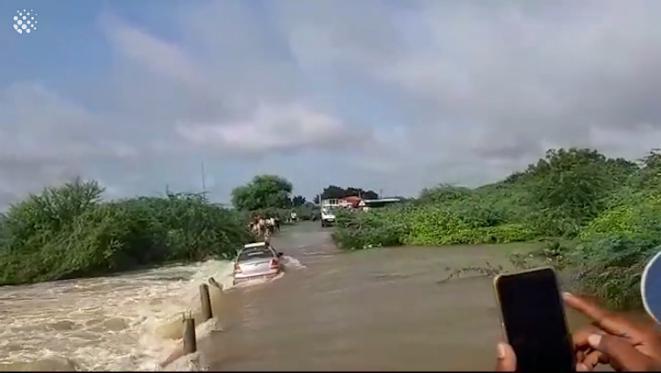
A flash flood is a flood that occurs in a short period of time after a high intensity rainfall event or a sudden massive snow melt.
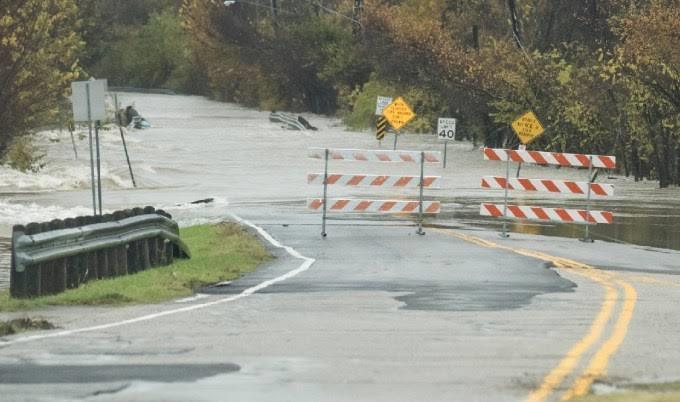
A sudden increase in the level and velocity of the water body is often characteristic of these events. Rising water levels in the river network can reach its peak within minutes to a few hours of the onset of the flood event, leaving an extremely short time for warning. They are localised phenomena that occur in watersheds with maximum response times of a few hours. Therefore, the majority of flash floods occur in streams and small river basins that have a catchment area of a few hundred square kilometres or less.
A flash flood alert system is an hazardous weather statement issued by national weather forecasting agencies throughout the world to alert the public that a flash flood is imminent or occurring in the warned area and rural areas. A flash flood is a sudden, violent flood after a heavy rain, or occasionally after a dam break. Rainfall intensity and duration, topography, soil conditions, and ground cover contribute to flash flooding. That’s was the reason behind that made of this model. It is useful for People.
International Journal of Engineering Research and Reviews ISSN 2348-697X (Online) Vol. 10, Issue 2, pp: (14-18), Month: April - June 2022, Available at: www.researchpublish.com
Objectives:
In this project we used Hardware and some useful garbage material. This device not required any software. In the project if your made government level then we can also use float Switch sensor, ardinio. etc
We easily handle this device and device quickly perform action of water level (high-low) Also, we have not issue to NDRF team come or not.
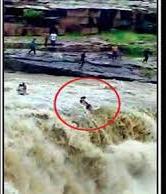
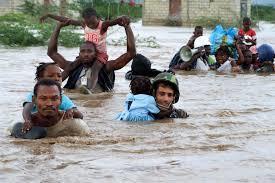
Several factors contribute to flash flooding. The two key elements are rainfall intensity and duration. Intensity is the rate of rainfall, and duration is how long the rain lasts. Topography, soil conditions, and ground cover also play an important role.
Flash floods occur within a few minutes or hours of excessive rainfall, a dam or levee failure, or a sudden release of water held by an ice jam. Flash floods can roll boulders, tear out trees, destroy buildings and bridges, and scour out new channels. Rapidly rising water can reach heights of 30 feet or more. Furthermore, flash flood-producing rains can also trigger catastrophic mud slides. You will not always have a warning that these deadly, sudden floods are coming. Most flood deaths are due to FLASH FLOODS.
Most flash flooding is caused by slow-moving thunderstorms, thunderstorms repeatedly moving over the same area, or heavy rains from hurricanes and tropical storms.
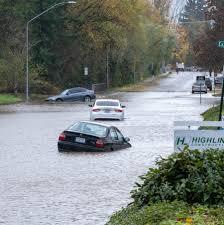
Flash floods most often occur in dry areas that have recently received precipitation, but they may be seen anywhere downstream from the source of the precipitation, even many miles from the source. In areas on or near volcanoes, flash floods have also occurred after eruptions, when glaciers have been melted by the intense heat. Flash floods are known to occur in the highest mountain ranges of the United States and are also common in the arid plains of the Southwestern United States. Flash flooding can also be caused by extensive rainfall released by hurricanes and other tropical storms, as well as the sudden thawing effect of ice dams. Human activities can also cause flash floods to occur. When dams fail, a large quantity of water can be released and destroy everything in its path.
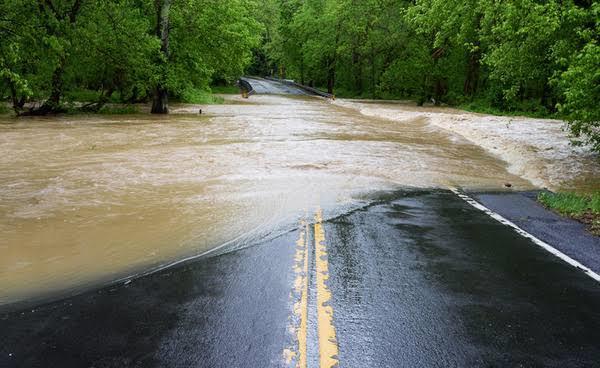
International Journal of Engineering Research and Reviews ISSN 2348-697X (Online)
Vol. 10, Issue 2, pp: (14-18), Month: April - June 2022, Available at: www.researchpublish.com
This project is useful for government project because it is saves people .who are alive in rural areas and near dam also, In this project we used Hardware And some useful garbage material. This device not required any software. In the project if your made government level then we can also use sensor, ardinio Etc
We easily handle this device and device quickly perform action of water level (high-low)
Also, we have not issue to NDRF team is comes or not.
It’s Automatic close and open the Door with the help of male/female connected or comfortable sapare parts.
How Automatic close /open (works :
1. When the level of water Flow is increased then door is automatic close and give a signal red, and Buzzer
2. And when the level of water flow is Decreased then the door is automatic open and give a signal yellow, Buzzer:
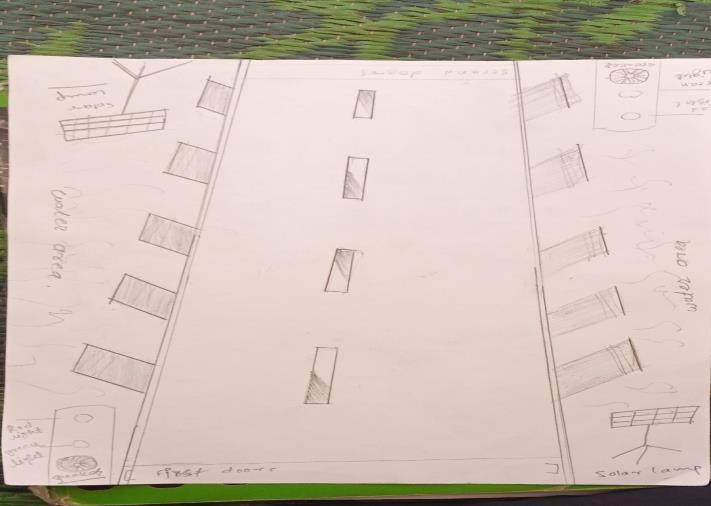
Hardware Requirement:
PRODUCT QUANTITY
Resistance 2(1k)
LED light 2
Buzzer House model Can
2(as comfortable) (As room 1/2) Teen/plastic Teen Theormocol
Pin Wood Colors
Power supply Solar panel (small 1), batterybattery, cables,charger etc
5.1 Structure of Project:
5.2 Automatic Close /open the Door and give signal/Buzzer:
It’s Automatic close and open the Door with the help of male/female connected or comfortable spare parts. L
How Automatic close/open Doors (works):
1. When the level of water Flow is increased then door is automatic close and give a signal red, and on buzzer. People may not cross bridge. And save your life
International Journal of Engineering Research and Reviews ISSN 2348-697X (Online) Vol. 10, Issue 2, pp: (14-18), Month: April - June 2022, Available at: www.researchpublish.com
2. And when the level of water flow is Decreased then the door is automatic open and give a signal Green and off Buzzer. People may cross easily and safely.
This project is useful for goverment project because it is saves people .who are alive in rural areas.and near dam also, In this project we used Hardware And some useful garbage material.This device not required any software. In the project if your made government level then we can also use sensor, ardinio. Etc
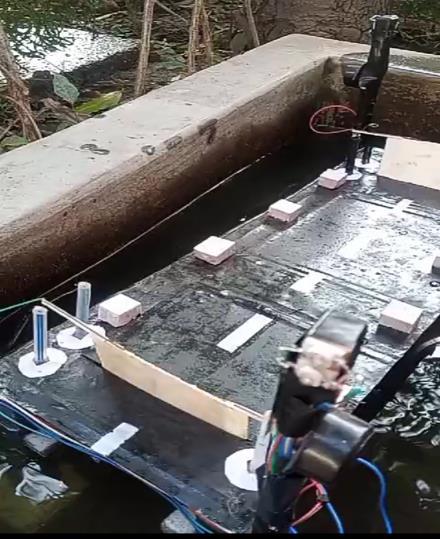
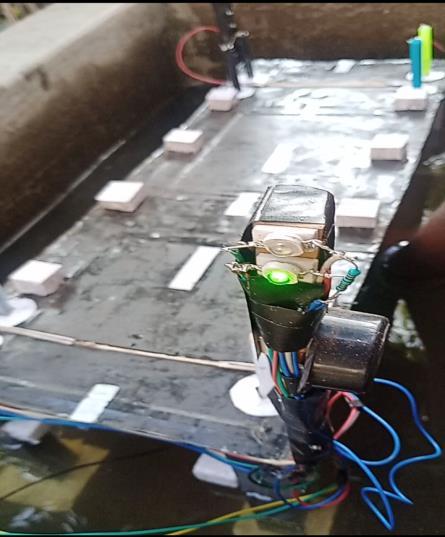
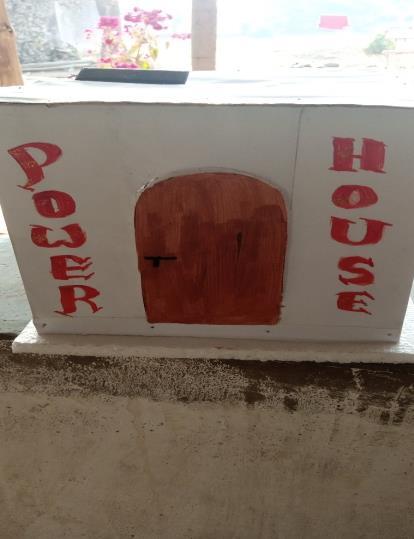
Success is the manifestation of diligence, perseverance, inspiration, motivation and innovation. A Successful project is fruitful culmination of efforts by many people, some directly involved, and others who have quietly encouraged and extended their supports, while being in the background. I take this opportunity to extend my deep sense of gratitude and heartfelt thanks to all those who have help me directly or indirectly during the course of my project.
Firstly, I take this opportunity to express my gratitude and regards to my project Guide Prof. Bharati Pursharthi. For their invaluable guidance and suggestion. He was available for me whenever I faced any difficulty and helped me through them.
I also extend my gratitude to Prof. Deepak Bhiogade, Head of Department, CE, M.P.C.E , Bhandara, for continuously encouraging me throughout the year.
I would like to express my gratitude to Prof. Alone Sir, Principal, M.P.C.E. Bhandara, for providing me positive work culture and good environment that will always work as a milestone in my career.
I also express my immense gratitude towards the Lecturer of M.P.C.E, Bhandara, who had satisfied me by their professional knowledge and practical approach
International Journal of Engineering Research and Reviews ISSN 2348-697X (Online) Vol. 10, Issue 2, pp: (14-18), Month: April - June 2022, Available at: www.researchpublish.com
My special thanks to my parents supporting family and friends who continuously supported and encouraged me in every possible way for the successful completion of this thesis.
Last but not the least I thank God Almighty for its blessings without which the completion of this project work would not have been possible.
[1] Advances and Challenges in Flash Flood Risk Assessment: A ReviewK. Ali, Roshan M Bajracharyar, N. Raut Published 11 April 2017Environmental Science.
[2] Assessment of Water Erosion Hazards by Flash Floods Using Remote Sensing and GIS: A Case Study of Wadi Alhaytah Watershed in Wadi Natrun, Egypt O. Abd EL-Kawy Published 1 December 2019 Environmental Science.
[3] Flash floods in the Sahara: a case study for the 28 January 2013 flood in Qena, Egypt Moawad Badawy Moawad, Ahmed Omar Abdel Aziz, B. Mamtimin Published 1 May 2014 Environmental Science, Engineering
[4] Hydrometeorological analysis and forecasting of a 3 d flash-flood-triggering desert rainstormYair Rinat, F. Marra, +6 authors E. Morin Published 10 March 2021 Environmental Science Natural Hazards and Earth System Sciences
[5] Effect of rainfall‐sampling errors on simulations of desert flash floods J. Michaud, S. Sorooshian Published 1 October 1994 Environmental Science Water Resources Research.
[6] On the use of real‐time radar rainfall estimates for flood prediction in mountainous basins M. Borga, E. Anagnostou, E. Frank Published 27 January 2000 Environmental Science, Engineering
[7] Investigating error propagation in flood prediction based on remotely-sensed rainfall F. Hossain Published 2004 Environmental Science.